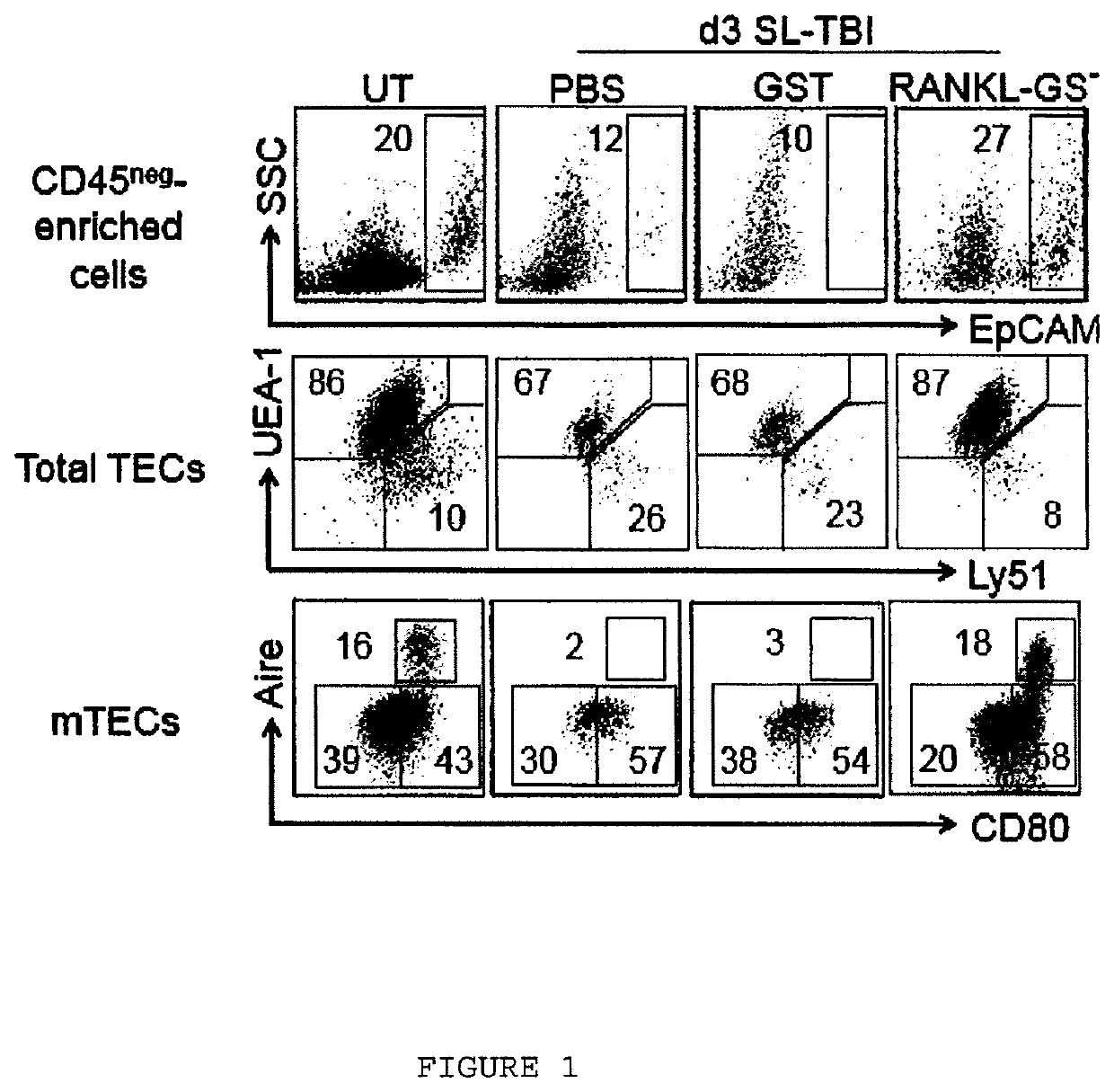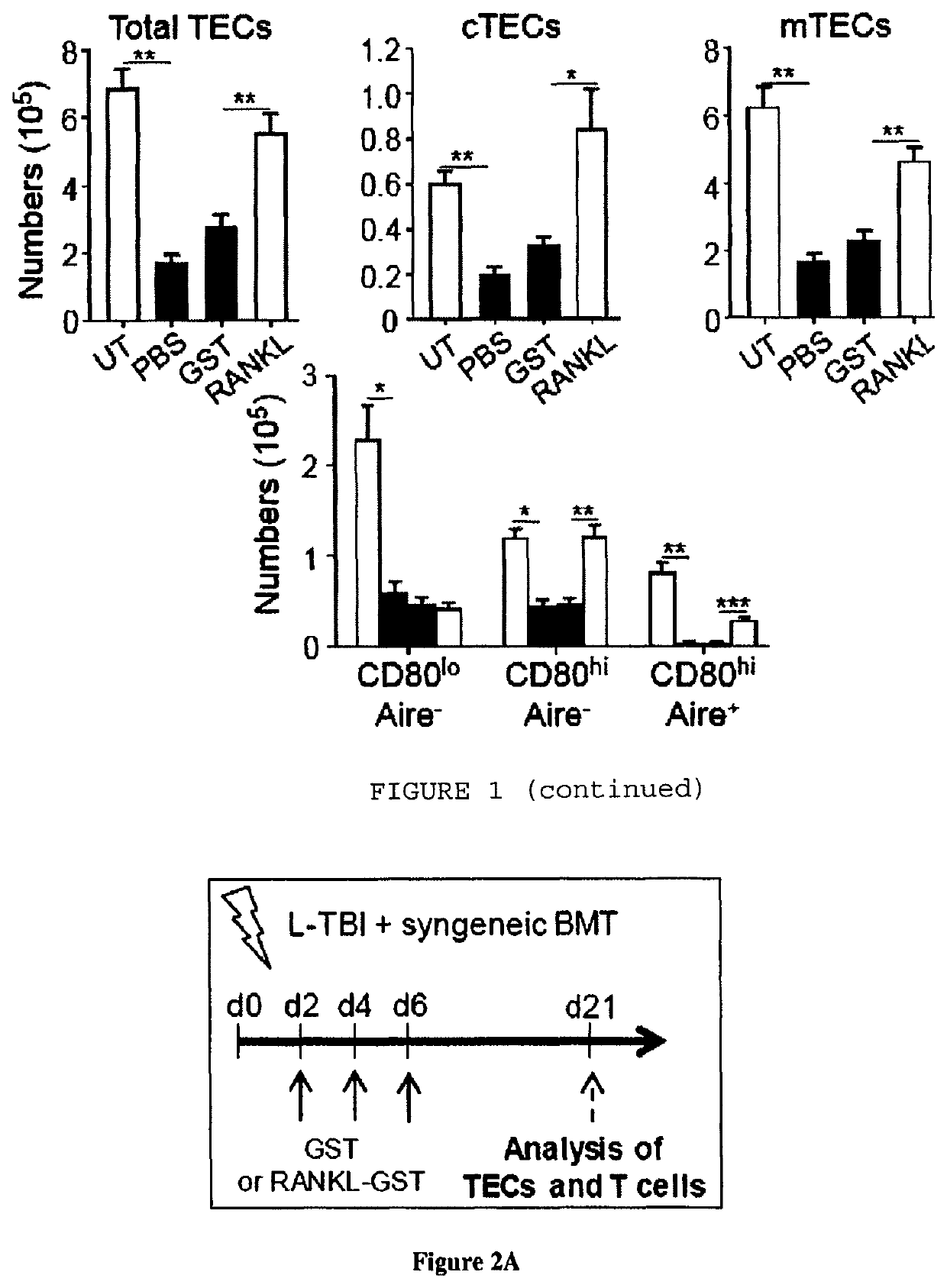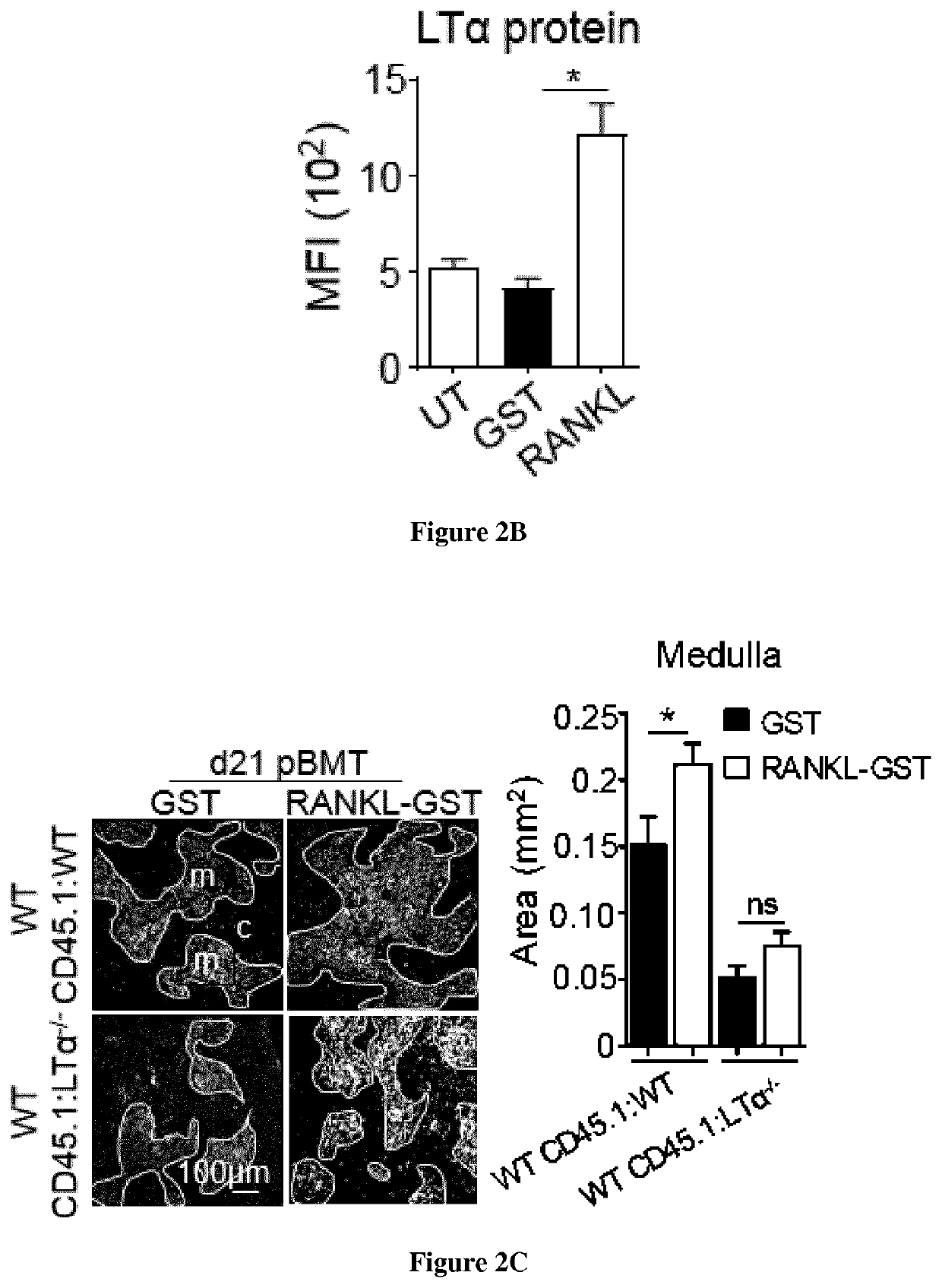Methods of boosting thymic regeneration in patients suffering from a thymic injury by using RANKL
a technology of thymic injury and thymic regeneration, which is applied in the direction of immunological disorders, drug compositions, peptide/protein ingredients, etc., can solve the problems of post-transplant morbidity and mortality, not only hematopoietic cells, and delayed t-cell reconstitution
- Summary
- Abstract
- Description
- Claims
- Application Information
AI Technical Summary
Benefits of technology
Problems solved by technology
Method used
Image
Examples
example
Material & Methods
[0039]Human Sample
[0040]Human thymic fragments were obtained from normal male and female patients (3 months to 15 years old) during cardiovascular surgery at the Necker Hospital (Paris, France). All tissue samples were fast-frozen in liquid nitrogen within 30 minutes of their excision from patients.
[0041]Mice
[0042]CD45.1 and CD45.2 WT (Janvier), CD45.2 LTα− / − (34), Rag2− / − (Shinkai Y et al. Cell. 1992. PMID:1547487), ZAP-70− / − (Kadlecek T A et al. J Immunol. 1998. PMID: 9794398) and RorcGFP / GFP knock-in (58) mice were on B6 background and maintained under specific pathogen-free conditions at the CIML (France). Chimeras were generated at 6-8 weeks or 6-8 months of age. WT mice of 12 months of age were used to analyze the effects of RANKL treatment on thymic involution.
[0043]Thymic Damage and BM Chimeras
[0044]TBI was performed with a Cs-137 γ-radiation source. Sublethal-TBI (SL-TBI) was performed with 500 rads with no hematopoietic rescue and lethal-TBI (L-TBI) with ...
PUM
| Property | Measurement | Unit |
|---|---|---|
| pH | aaaaa | aaaaa |
| bone resorption | aaaaa | aaaaa |
| resorption | aaaaa | aaaaa |
Abstract
Description
Claims
Application Information
 Login to view more
Login to view more - R&D Engineer
- R&D Manager
- IP Professional
- Industry Leading Data Capabilities
- Powerful AI technology
- Patent DNA Extraction
Browse by: Latest US Patents, China's latest patents, Technical Efficacy Thesaurus, Application Domain, Technology Topic.
© 2024 PatSnap. All rights reserved.Legal|Privacy policy|Modern Slavery Act Transparency Statement|Sitemap



